Part Three of the What Buddhism Taught Me About Travel series
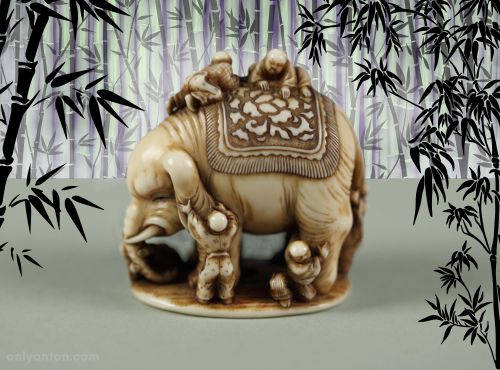
Introduction: Seeing Reality Where You Are
An ancient Buddhist parable from the Tittha Sutra tells of a group of blind men, each asked to describe an elephant. One man, touching the tusk, declares that an elephant is like a spear. Another, feeling the ear, insists it is like a fan. A third, grasping the tail, argues it is like a rope. Limited by his own perspective, each man believes he understands the truth of the elephant, yet none sees the complete picture. This timeless tale has been echoed in Jain, Hindu, Sufi, and other traditions. The story highlights a universal challenge: how our limited viewpoints shape—and often distort—our understanding of reality.
The parable invites us to consider the concept of “Seeing Reality Where You Are.” The concept is a cornerstone of Buddhist thought, which emphasizes perceiving the world as it is, free from distortion. This idea has special relevance to travel. As travellers, we often approach new places through the filter of our own biases—photos on Instagram, glowing guidebook descriptions, or stories from friends. These fragments of perspective, while valuable, can prevent us from seeing the fuller, richer reality before us. With its promise of unfamiliarity and surprise, travel offers a unique opportunity to lift these blindfolds and truly see what lies beyond our expectations.
Caveat
This post draws inspiration from Buddhist teachings, particularly the idea of “seeing reality as it is.” Still, I do not intend to present a doctrinal or definitive view of reality or truth. Instead, the focus is on practical insights for mindful travel, drawn from personal experience and universal themes across many traditions. Readers are encouraged to interpret and adapt these ideas in ways that resonate with their own journeys.
Preview
This third installment of the “What Buddhism Taught Me About Travel” series follows “What Buddhism Taught Me About Travel” and “Managing Expectations in New Places.” I will explore how travellers can see the world more clearly by examining distorted perceptions, embracing impermanence, overcoming idealized visions, and cultivating mindfulness. Whether you’re navigating the crowded streets of Marrakech, marvelling at the Great Wall of China, or simply seeking clarity in your everyday travels, this post offers practical wisdom to enrich your experience and deepen your connection to the world.
Section I: Understanding Distorted Perceptions
When we travel, we carry our minds with us—complete with their biases, assumptions, and blind spots. These mental filters shape how we interpret the world, often creating a version of reality that reflects our expectations rather than the truth. In Buddhist thought, this is known as avidyā, or ignorance—a state where mental illusions obscure our ability to see things as they truly are.
Defining Distorted Perceptions
Distorted perceptions are a natural byproduct of the human experience. They stem from cultural conditioning, upbringing, and personal experiences that colour our worldview. For instance, someone raised to value order and punctuality might perceive the laid-back rhythm of Mediterranean cultures as disorganization, while another might celebrate it as freedom. These filters, though often unconscious, act like lenses that warp the reality in front of us. Avidyā, in the Buddhist sense, refers not to a lack of information but to a misunderstanding of reality. It is a failure to recognize the interconnectedness and impermanence of all things.
Examples of Distortion in Travel
Travel marketing often perpetuates distorted perceptions by presenting idealized portrayals of destinations. Glossy brochures might promise pristine beaches or quaint, untouched villages, leading travellers to overlook the busy urban centers or imperfect realities that coexist with these images. On a deeper level, cultural prejudices can shape expectations. Consider a traveller hesitant to visit Colombia, believing it to be inherently dangerous. Upon arrival, they might discover a vibrant culture marked by warmth, resilience, and generosity—a reality far removed from the stereotypes they had internalized.
These distortions aren’t always negative. They can also lead to romanticized expectations. A traveller envisioning the Eiffel Tower as a serene beacon of elegance may feel let down by the crowds and commercialization surrounding it. Whether through bias or idealization, distorted perceptions hinder our ability to experience a destination authentically.
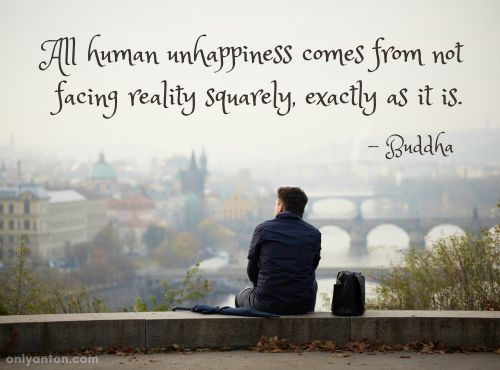
Impact on Travel Experiences
When distorted perceptions clash with reality, they can lead to misunderstandings, frustration, or disappointment. A misjudged culture might prevent meaningful connections. Clinging to an idealized image can rob a traveller of appreciating a destination’s genuine character. Conversely, letting go of these distortions opens the door to richer experiences. A chaotic market might transform from an overwhelming assault on the senses to an opportunity for human connection. A city once dismissed as “ugly” might reveal unexpected beauty in its street art, markets, and the kindness of its residents.
By recognizing and challenging our distorted perceptions, we allow ourselves to engage with the world more honestly and deeply, fostering a sense of connection and understanding that enriches our travels and our lives.
Section II: Embracing Impermanence and Change
Travel, like life, is a constant flow of change. We enter new environments, encounter unfamiliar faces, and live through moments that, by their nature, cannot last. This transient nature of travel mirrors a core Buddhist principle: anicca, or impermanence. It is the understanding that all things are fleeting, no matter how cherished. In Buddhist thought, suffering arises when we cling to permanence, resisting the inevitable shifts and changes around us. By embracing impermanence, we cultivate peace and learn to appreciate life’s ephemeral beauty.

The Buddhist Principle of Impermanence (Anicca)
Impermanence is a cornerstone of Buddhist philosophy, emphasizing that all things—relationships, emotions, possessions—are in a state of constant flux. Clinging to the idea that things should remain as they are creates frustration and suffering. In contrast, accepting impermanence allows us to let go of rigid expectations and embrace the unfolding of reality as it is. In travel, this lesson takes on particular resonance, where plans can shift unexpectedly, and moments slip away as quickly as they arrive.
Relevance to Travel
Travel itself is impermanent by design. Fleeting experiences mark each journey:
- The brilliant sunset that lasts mere minutes.
- The lively conversation with a stranger you’ll likely never meet again.
- The temporary joy of exploring a destination before moving on to the next.
Travel often places us in liminal spaces, like airports or train stations, where we are neither here nor there. These are ephemeral moments that challenge our desire for rootedness. Recognizing travel’s impermanence helps us appreciate these transient experiences for what they are rather than lament their passing.
Personal Anecdotes
Travel is a constant reminder of the impermanence that defines life. Plans change, moments pass, and experiences evolve, often leading to unexpected discoveries. Embracing this truth allows travellers to find beauty in unpredictability and peace in transience.
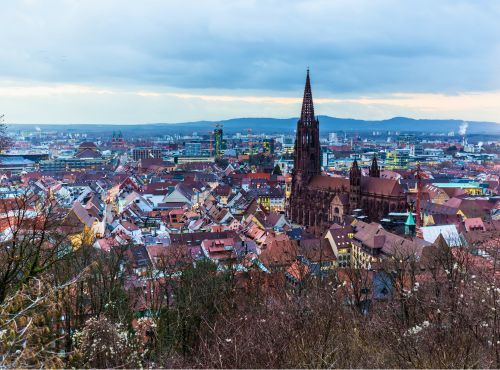
Black Forest Ski Trip
One winter in the late 1980s, I learned this lesson on a ski trip to the Black Forest in Germany. Unseasonably warm weather had melted away the snow, making skiing impossible. Instead of clinging to disappointment, my friends and I explored the nearby city of Freiburg, savouring delicious sausages and soaking in the region’s charm. I also struck up a temporary friendship with a fellow traveller who shared my love of British Punk and New Wave music. Though brief, our connection enriched the trip, reminding me that sometimes, the most memorable moments are unplanned.
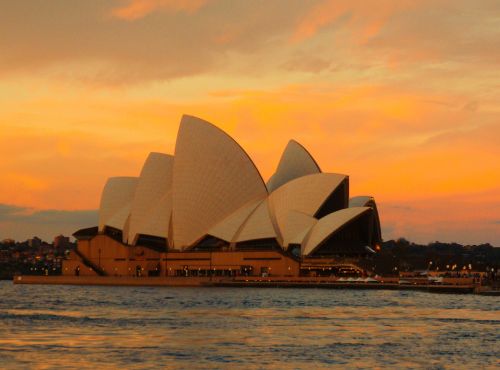
Sydney Opera House at Sunset
Years later, I experienced impermanence differently at the Sydney Opera House. Before attending a performance of Mozart’s The Magic Flute, I wandered the terrace overlooking the harbour. As the sun dipped below the horizon, painting the sky with vibrant hues, hundreds of fruit bats emerged from the Royal Botanic Garden, taking flight into the night. The moment was fleeting but unforgettable—a vivid reminder that beauty often lies in the temporary.

Capuchin Crypt
In Rome, a closed art museum once led me to the Capuchin Crypt, a hauntingly beautiful reminder of mortality. This unexpected detour reinforced the idea that unplanned changes often yield deeper, more meaningful experiences.
Closing Reflection
Each of these experiences illustrates the importance of embracing impermanence and change. When we release our grip on how things “should” be, we open ourselves to the richness of what is.
Section III: Breaking Through Illusions
Dreams often drive travel. We envision pristine beaches, serene landscapes, or iconic landmarks, all to ourselves in perfect solitude. It is easy to imagine ourselves in such locations. Rarely do we include other people in our visions. It is almost a form of solipsism. These idealized expectations, however, are shaped by media, cultural narratives, and personal fantasies. They can create a distorted lens through which we view the world. Unlike the broader concept of managing expectations, breaking through illusions means stripping away these romanticized constructs to embrace the fullness of reality, however messy or unexpected it might be.
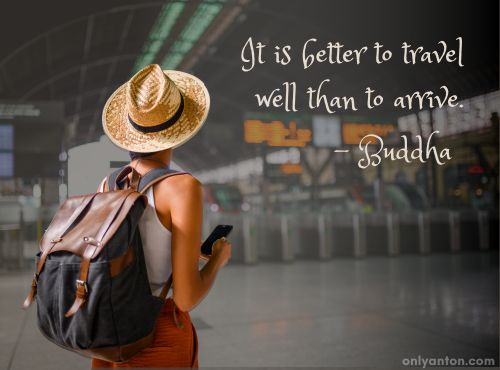
Defining Idealized Expectations
Idealization differs from simple expectation in its emotional intensity. While expectations involve predicting or anticipating outcomes, idealizations are deeply rooted in our desires for perfection. Social media posts of secluded vistas, polished travel ads, or even childhood stories contribute to these mental images. They create a fictional version of reality, which we carry into new places, often unconsciously. Buddhist teachings remind us that clinging to illusions, whether of people, places, or experiences, prevents us from truly seeing the world as it is.
Impact of Idealizations
When reality doesn’t align with the perfect picture we’ve constructed, the result is often disillusionment. The thronging marketplace is seen as chaotic rather than vibrant. The crowded tourist site feels disappointing instead of communal. By holding tightly to an ideal, travellers risk missing the richness of the experience, including its imperfections.
Examples: From Versailles to Art Museums
Travelling to Versailles with my then-wife illuminated the pitfalls of idealized visions. She dreamed of walking through the Hall of Mirrors alone, immersed in quiet grandeur. Instead, she encountered the reality of crowds, security, and scrabbling tour groups. This gap between fantasy and reality led to dissatisfaction, a reminder of how our mental projections can undermine our enjoyment.
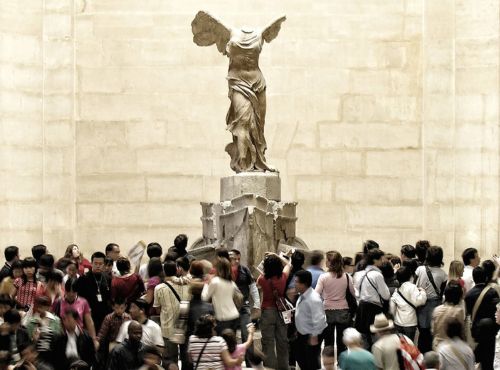
I’ve faced similar challenges in art museums. Having grown up admiring art through flawless reproductions in books, I imagined an intimate experience with the world’s masterpieces. When I could view these works in person, the physical scale of the paintings surprised me. Some were smaller than I’d imagined. Others were overwhelming in size. Far from being alone with the art, I was surrounded by fellow visitors. These moments taught me to shift my perspective, seeing the presence of others as part of the shared wonder that these cultural treasures inspire.
Strategies to See Beyond Idealizations
Breaking through illusions requires intentional practice:
- Encourage Active Curiosity: Seek untold stories or overlooked details. Explore beyond the tourist zones to uncover a place’s multifaceted reality.
- Practice Mindfulness: Observe without judgment, letting go of comparisons to preconceived ideas.
- Adopt a Learner’s Mindset: Approach each destination humbly, eager to understand rather than consume.
Practical Tip: When visiting iconic locations, shift your mindset to embrace the shared human experience of beauty and history. The magic often lies in unexpected moments, not in fulfilling an imagined ideal. By loosening the grip on our idealizations, we can transform disillusionment into deeper appreciation, opening ourselves to the world’s complex and layered reality.
Section IV: Cultivating Mindfulness and Presence
In the whirlwind of travel—rushing through airports, navigating unfamiliar streets, checking off bucket-list sights—it’s easy to become disconnected from the very experiences we seek. Mindfulness offers a pathway back to presence. At its essence, mindfulness is the practice of focused attention and being fully engaged in the current moment. It invites us to observe our surroundings and ourselves without judgment, helping us see reality without the haze of bias or distraction. For travellers, cultivating mindfulness can transform a trip from a series of events into rich, meaningful experiences.
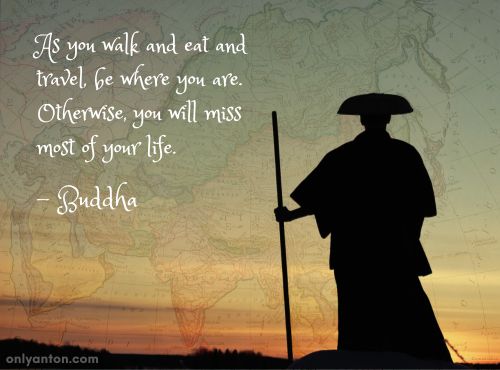
Mindfulness in Travel
Mindfulness in travel means immersing yourself wholly in your journey. It’s about slowing down and paying deliberate attention to the world around you. Instead of merely passing through a place, you actively participate in its rhythm and pulse. Such heightened awareness allows you to experience destinations authentically, appreciating both the grandeur and the subtleties that might otherwise go unnoticed.
Practicing mindfulness teaches you to observe without immediately labelling experiences as good or bad, pleasant or unpleasant. This openness enables you to encounter each moment as it is, free from preconceived notions or internal chatter. It aligns closely with Buddhist teachings on presence and can significantly enhance your ability to see reality where you are.
Techniques for Mindfulness in Travel
Breathing Exercises
One of the simplest ways to ground yourself is through conscious breathing. Before you step out each morning or whenever you feel overwhelmed, take a few moments to focus on your breath. Inhale deeply through your nose, feeling your lungs expand, then exhale slowly through your mouth. Repeat this several times. This practice centers your mind and brings your attention back to the present moment.
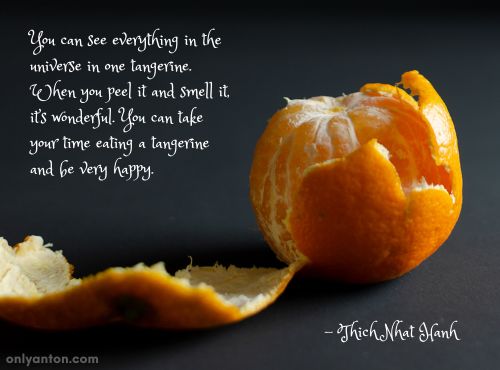
Sensory Mindfulness
Engage all your senses to deepen your connection with your surroundings. As you walk through an active market, it is relatively easy to notice the vibrant colours of fruits and textiles. The mingling aromas of spices and street food are also hard to miss. However, pay attention to the texture of cobblestones under your feet. Listen to the sounds of haggling vendors and distant music. You anchor yourself in the here and now by actively tuning into sights, sounds, smells, tastes, and tactile sensations.
Journalling or Sketching
Documenting your experiences through journalling or sketching can enhance mindfulness. Writing about your day encourages reflection and helps solidify memories. Describe what you did, how you felt, what surprised you, and any insights gained. Sketching scenes, even if you’re not an artist, forces you to observe details more closely—the curve of a building, the interplay of light and shadow, and the expressions of people around you. These creative practices slow you down and deepen your engagement with a place.
Benefits of Mindfulness
Greater Appreciation for Subtle Details
By cultivating mindfulness, you become more attuned to the nuances of your environment. You might notice the gentle rituals of daily life in a village, the unique patterns in local art, or the quiet moments of connection between people. This awareness enriches your travel experience, allowing you to appreciate aspects of a destination that others might overlook.
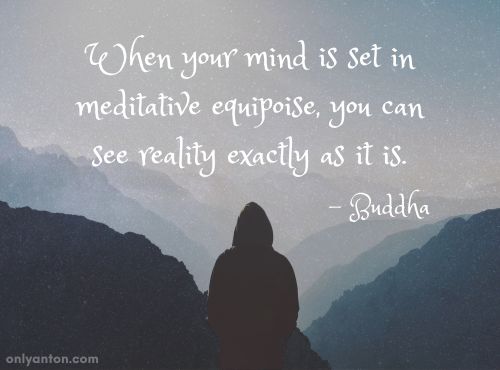
Reduced Anxiety and Stress
Travel doesn’t always go according to plan. Flights get delayed, weather shifts unexpectedly, and attractions close. Mindfulness helps you navigate these challenges with equanimity. By focusing on the present moment rather than worrying about past mishaps or future uncertainties, you reduce anxiety and enhance your ability to respond thoughtfully rather than impulsively.
In embracing mindfulness, you open yourself to the full spectrum of experiences that travel offers. It’s a practice that enhances your journeys and fosters personal growth and deeper connections with the world around you. For a deeper dive into how mindfulness can transform your travels, you might find my post “Mindful Travel: Finding Meaning in Our Journeys” insightful.
Section V: Personal Reflections on Seeing Reality Where You Are
Travel is often described as an act of discovery. However, some of the most profound revelations come not from the landscapes we traverse but from within. Shedding preconceptions and seeing reality as it is can be a transformative experience—both in travel and everyday life. Clarity often arises when we let go of resistance and accept the world on its terms.
The Road to Acceptance: A Commute Through Toronto’s Traffic

Years ago, while working in industrial construction, I faced the daily ordeal of Toronto’s infamous traffic. My morning commute to a worksite north of the city often stretched far beyond what I deemed reasonable. I would grip the steering wheel in frustration, silently cursing the drivers who, in my distorted view, were conspiring to slow me down. I clung to the expectation that the commute should take no more than an hour, and when reality shattered that illusion, my stress and anger grew.

One morning, the realization struck: traffic wasn’t about me. I wasn’t the center of the universe. The drivers around me were simply trying to reach their destinations, just as I was. The problem wasn’t the traffic—it was my refusal to accept reality as it was. Instead of fighting against the unchangeable, I started adjusting my routine. I left earlier, knowing the commute would take longer. I began listening to music or podcasts to make the time enjoyable. With this shift in perspective, the frustration melted away, replaced by a sense of calm and even gratitude for the quiet time in the car.
The Lesson
This experience taught me that much of our suffering stems from resisting reality. It is crucial to align our expectations with the world as it is, not as we wish it to be or think it should be. In doing so, we find peace and a newfound capacity for patience and acceptance. This principle echoes the Buddhist teaching of dukkha (suffering) and its root in craving and aversion. When we let go of the illusion of control and embrace the impermanence of circumstances, we open ourselves to more profound equanimity and joy.
The same principle applies to travel: the world unfolds on its terms, not ours. The journey becomes far richer and more fulfilling when we embrace this truth.
Practical Tip
Try reframing the situation in traffic at home or on a crowded bus in a foreign city. Ask yourself: What is the reality of this moment? How can I work with it rather than against it? Often, a shift in perspective is all it takes to transform frustration into contentment.
Conclusion
Travel, like life, invites us to peel back the layers of our perceptions and see the world as it truly is. By understanding how our biases and expectations distort reality, we can embrace the impermanence of each moment and cultivate mindfulness to deepen our experiences. Seeing reality where you are—whether on a crowded street in a foreign city or a serene mountain trail—opens the door to unexpected beauty and meaningful connections.
As we navigate the journey of mindful travel, it’s worth remembering that clarity and acceptance can transform how we see the world and how we relate to it. This post has explored the importance of letting go of illusions, embracing change, and being present. These lessons resonate deeply with Buddhist teachings and offer valuable tools for enriching travel experiences.
The following post in the What Buddhism Taught Me About Travel series is “The Art of Letting Go While Travelling.” I will delve deeper into releasing attachments and embracing the transformative power of surrender during your journeys.
What About You?
Have you ever experienced a moment while travelling when your perspective shifted, allowing you to see a place or culture in a new light? Perhaps you’ve encountered situations where reality didn’t match your expectations but still offered a meaningful lesson. How do you approach the challenge of setting aside preconceptions to embrace the present moment?
I’d love to hear about your experiences and insights. Share your stories in the comments below and join the conversation about mindful and meaningful travel. Your reflections might inspire others on their journeys!
Glossary of Terms
Here’s a brief list of terms you might encounter throughout the series:
- Anicca: Impermanence, the idea that all things are in constant change.
- Avidyā: Ignorance or misunderstanding, the lack of true knowledge obscuring reality.
- Dukkha: Suffering or dissatisfaction, central to the Buddhist worldview.
- Dharma: Teachings or truth, often referring to the teachings of the Buddha.
- Karma: The principle of cause and effect through intentional actions.
- Metta: Loving-kindness, a practice of cultivating goodwill toward all beings.
- Nirvana: The cessation of suffering and the end of the cycle of rebirth.
- Upekkha: Equanimity, a state of balance and calmness amid life’s highs and lows.
New terms will be introduced throughout the series as needed, offering deeper insights into the teachings relevant to travel.
Further Reading and Resources
Related Posts on Only Anton
- What Buddhism Taught Me About Travel: This series’s introductory post explores how Buddhist teachings can inspire mindful and transformative travel experiences.
- Managing Expectations in New Places: Insights into adjusting expectations to cultivate openness and reduce disappointment while travelling.
- Mindful Travel: Finding Meaning in Our Journeys: A guide to embracing mindfulness during travel, fostering deeper connections and appreciation.
- Are You a Tourist or a Traveller?: A thought-provoking post that examines the distinction between these two approaches to exploring the world.
- Travel and Philosophy: A deep dive into how philosophical perspectives can enrich how we experience and reflect on travel.
External Resources
These resources provide a blend of philosophical insights and practical advice, perfectly complementing the ideas explored in this blog post.
Books
- Buddhism Without Beliefs: A Contemporary Guide to Awakening by Stephen Batchelor (1998): An accessible introduction to Buddhist teachings, focusing on practical insights for everyday life rather than religious dogma. Locate it at a library, check online options, or purchase it here.
- Seeing Clearly: A Buddhist Guide to Life by Nicolas Bommarito (2020): A modern introduction to Buddhist philosophy focused on cultivating awareness and clarity in daily life. Look it up at a local library, browse online, or buy your copy here.
- Peace Is Every Step: The Path of Mindfulness in Everyday Life by Thich Nhat Hanh (1992): A guide to living mindfully, fostering inner peace, and finding joy in the present moment. Find it at your library, browse online, or grab your copy here.
- Walking with Buddha: Pilgrimage on the Shikoku 88-Temple Trail by C. W. Lockhart (2021): A reflective account of a spiritual journey along Japan’s 88-temple pilgrimage, blending personal insights with Buddhist teachings. Check your local library, search online, or order a copy here.
Articles
- “The Tyranny of Expectations” by Phillip Moffitt, Dharma Wisdom: A thoughtful piece on how letting go of expectations can lead to inner peace and clarity. Read the article here.
- “Blind Men and an Elephant,” Wikipedia: Interpretations of this timeless Buddhist parable, with insights into perception and understanding. Find the article here.
Websites
- Tricycle: The Buddhist Review: A leading online resource for Buddhist teachings, philosophy, and contemporary perspectives.
- Lion’s Roar: Buddhist Wisdom for Our Time: A trusted source for articles and insights on mindfulness, Buddhism, and modern living.
- Mindful.org: Practical advice and articles on incorporating mindfulness into everyday life and travel.
YouTube Channels
- The School of Life: Philosophy and psychology-based insights, often touching on mindfulness and perception.




